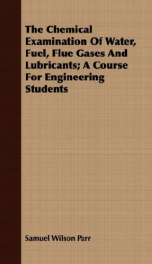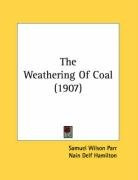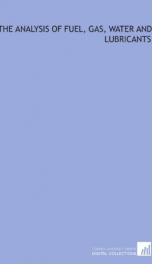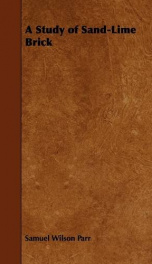the chemical examination of water fuel flue gases and lubricants a course for

CONTENTS PART I LECTURES Chapter Source and character of mineral content 5 Effect of impurities 8 Chemical treatment 13 Apparatus for applying chemical processes 18 Rating of boiler waters 23 Type waters and calculated treatment 26 Chapter ll Fuels Types, relative values Coal 27 Properties, Classification 30 I Boiler Waters PAGE Sampling 32 Moisture, Calculations 43 Unit Coal, Corrected ash 46 Calorimetric measurements 49 Table of average values 60 Coal specifications and contracts 61 Combustion, Smoke 65 Storage, Weathering 66 results 71 Calculation for heat losses 72 Lubricants, Types, Properties 76 Chapter III Flue Gases, Significance of analytical Chapter IV PART II LABORATORY METHODS- Chapter V Preliminary experiments 79 Standard solutions 80 Chapter VI Boiler water analysis - 85 Summary and calculations 92 Chapter VII Fuel Analysis, Proximate 94 Heat Values, Peroxide Calorimeter 97 Sulphur determination 103 Heat values, oxygen bomb 108 Calculations 114 Chapter VIII Ultimate analysis 115 Total carbon by volume 117 Available hydrogen 119 Flue gas analysis 120 Chapter IX Chapter X Oil examination 122 Index . . 128 349279 PRELIMINARY STATEMENT This work is intended primarily for Juniors in Mechanical and Railway Mechanical Engineering at the University of Illinois. From the chemical standpoint, it is a very serious problem to know what may profitably be attempted in the way of analytical methods in the case of students whose chemical experience is meager. But, however unsat- isfactory the amount of preliminary training, it is obvious that the curriculum in Engineering courses is already overcrowded, hence the obtaining of a better prerequisite in chemistry is well nigh impossible. The work as herein outlined is the result of ten years of effort to make the most of the situation. It would be quite too much to claim that in the evolution of the work a satisfactory status has been attained. It is hoped, however, that the course will at least help the engineer to a better understanding of the literature of the topics considered and also to an appreciation and, consequently, a more intelligent use of data which may come into his hands from the chemist. It may not be out of place to state further that the course, which, at the first, was inaugurated with no little misgiving, has more than justified the experiment. For this result credit is due the students, who, from year to year have carried the work through with a responsiveness which has been the main stimulus in developing this outline into its present form. Part I is a synopsis only of the lectures given. Part II consists essentially of laboratory directions for the analytical methods there undertaken. The time allowance for lectures, quizzes, and laboratory is nine hours per week for 18 weeks. The amount of work as outlined is such that the average student covers the ground in the time prescribed. Special acknowledgement is due Dr. H. J. Broderson for suggested improvements in the present edition and for valued assistance in the reading of proof. PART I DESCRIPTIVE OUTLINE CHAPTER I BOILER WATERS THEIR EXAMINATION, CHARACTER AND TREATMENT. Water Analysis Waters are examined for two very different purposes. First, the object may be to determine the potability or sanitary character of the water and, second, it may be desired to learn the behavior or value of the water for industrial uses. The requirements under each division are very different...
Users who have this book
Users who want this book
What readers are saying
What do you think? Write your own comment on this book!
write a commentif you like the chemical examination of water fuel flue gases and lubricants a course for try:
Do you want to read a book that interests you? It’s EASY!
Create an account and send a request for reading to other users on the Webpage of the book!





